
Natural History of the Dakubetede Wilderness
Official Syllabus download link:
SC403k: Natural History of the Dakubetede WildernessThe study of natural history provides an opening into the process of developing a sense of place. Familiarizing oneself with the plant and animal inhabitants of a particular place, and learning about that place’s ecosystems and human history, comprise the first steps of becoming native to that place. SC403k is an eight-week journey toward developing a sense of place in the Dakubetede Wilderness. Natural history studies here are challenging, as a high degree of biodiversity has evolved in a mosaic of diverse ecosystems draped over rugged terrains formed by complex geology.
We will explore the discipline of natural history as applied to this watershed, and as a method of cultivating a naturalist's eye towards the world wherever we look. We will learn the names and life histories of the life forms around us, as well as the process for identifying organisms in general. Observation and questioning will be our tools for seeing deeper into the complexities of the natural world. As we develop a foundation of understanding about the ecological systems we encounter, we will seek to connect this knowledge to our goals as conservationists.
A good deal of time will be spent in the field formally and informally investigating natural history. This will include guided nature walks on campus and in surrounding wilderness, all day field trips to other areas (Table Rocks, Siskiyou Crest, Crater Lake, and more), mini each-one-teach-one assignments, short lectures and activities. Guest instructors will provide in-depth instruction on aquatic ecology, ornithology, herpetology, reserve design, native land management, and more.
As the syllabus states, your process of developing this sense of place will manifest in various written forms: a detailed field journal, a paper, a map, and a final exam.
Keeping a journal of your natural history observations and experiences is a gift to your future, a record of your embeddedness in every place you linger long enough to call it home. Your natural history field journal will detail your process of identifying features of landforms, weather and its patterns, ecosystems and their processes, plants and animals and their habitats. These details will be portrayed through your writings, drawings, photographs, species lists, and plant collections.
Your natural history “paper” will manifest as a number of shorter reports and articles prepared for the Little Applegate Wildlands Network Conservation Plan (LAWN-CP), the project we create together as our Applied Conservation Biology coursework.
Your mapping project includes tracing your Ecostery travels on a series of topographical maps. Other mapping components may include various maps for the LAWN-CP and creating a simple topographical map of a selected area of the Dakubetede Wilderness Campus.
The natural history final exam will be based on course learning experiences. The exam will be given, graded and discussed on the last day of the course.
On our natural history outings you will need to bring a small day-pack with the following items: binoculars, hand lens, compass, small notebook, guide books (wildflowers, birds, trees & shrubs), camera, clothing for the weather, water bottle, lunch/snacks, work gloves.
About D.E.E.P. Application "Community Through Education" Contact
Curriculum Dakubetede Wilderness Campus Ecostery Thanks & Praises Photo Album